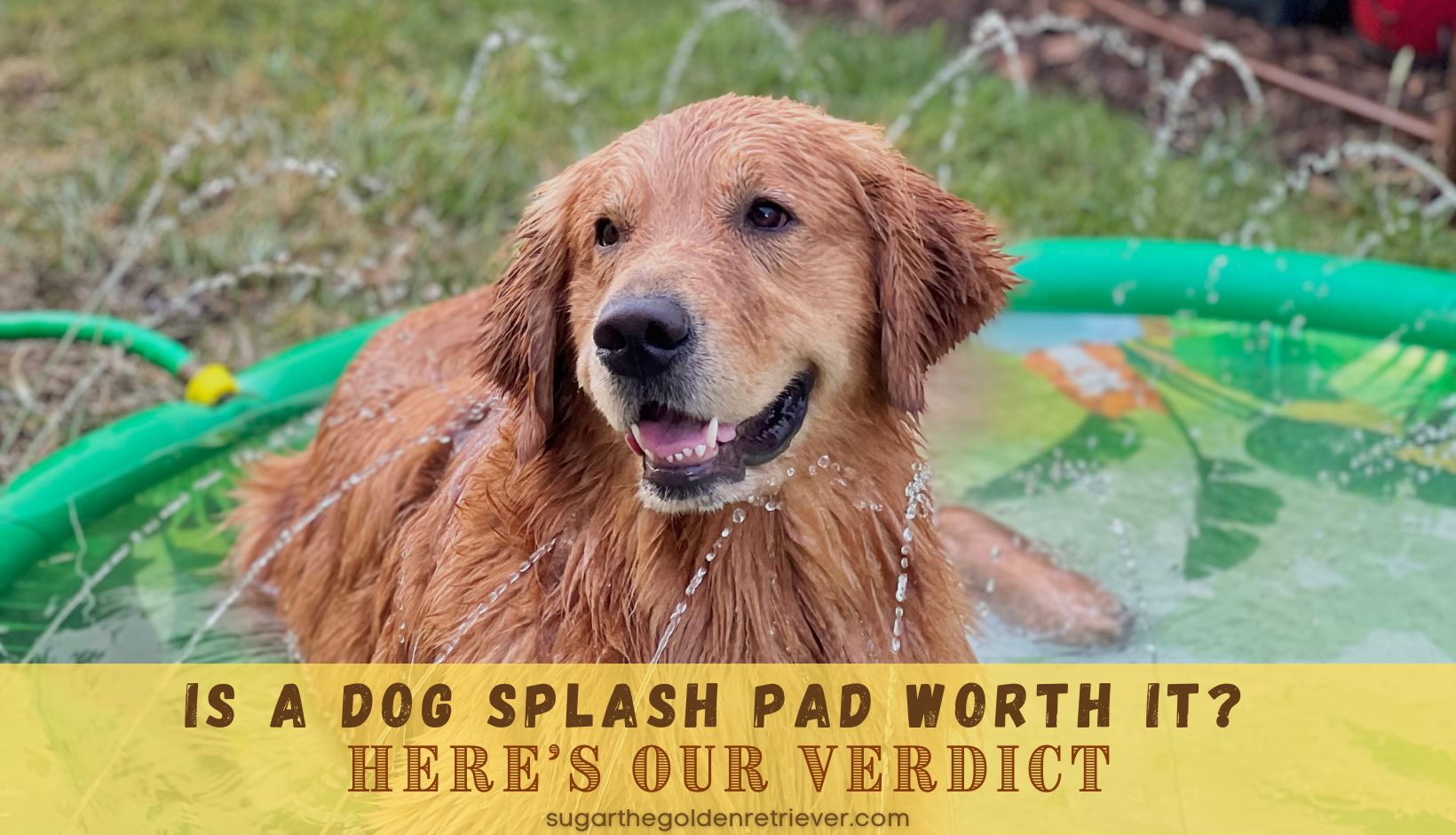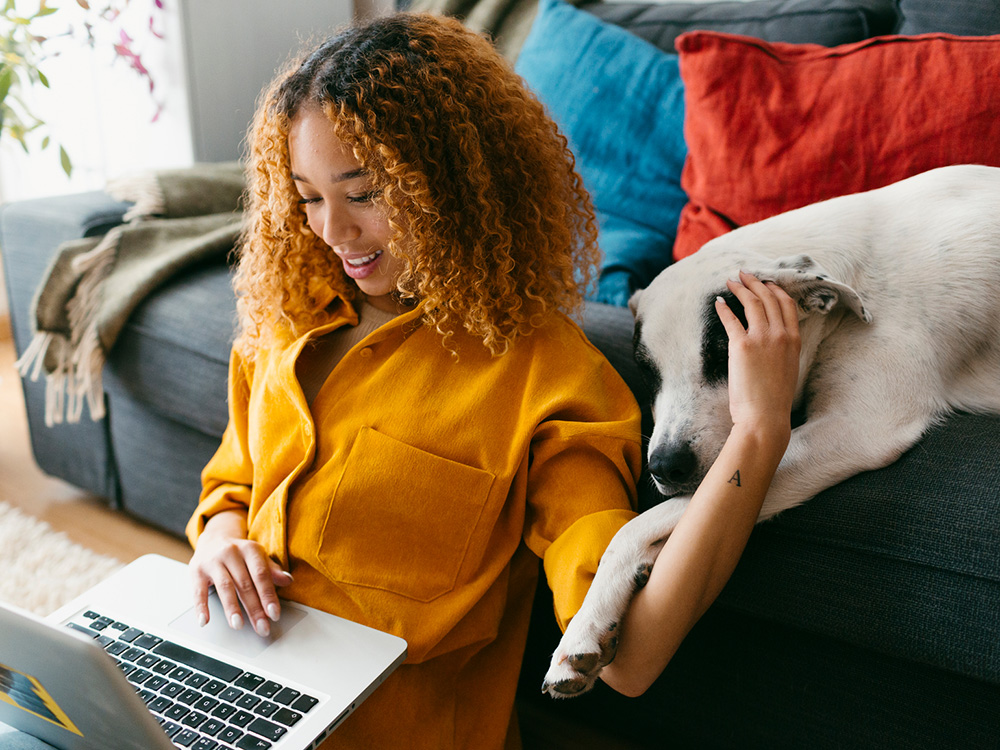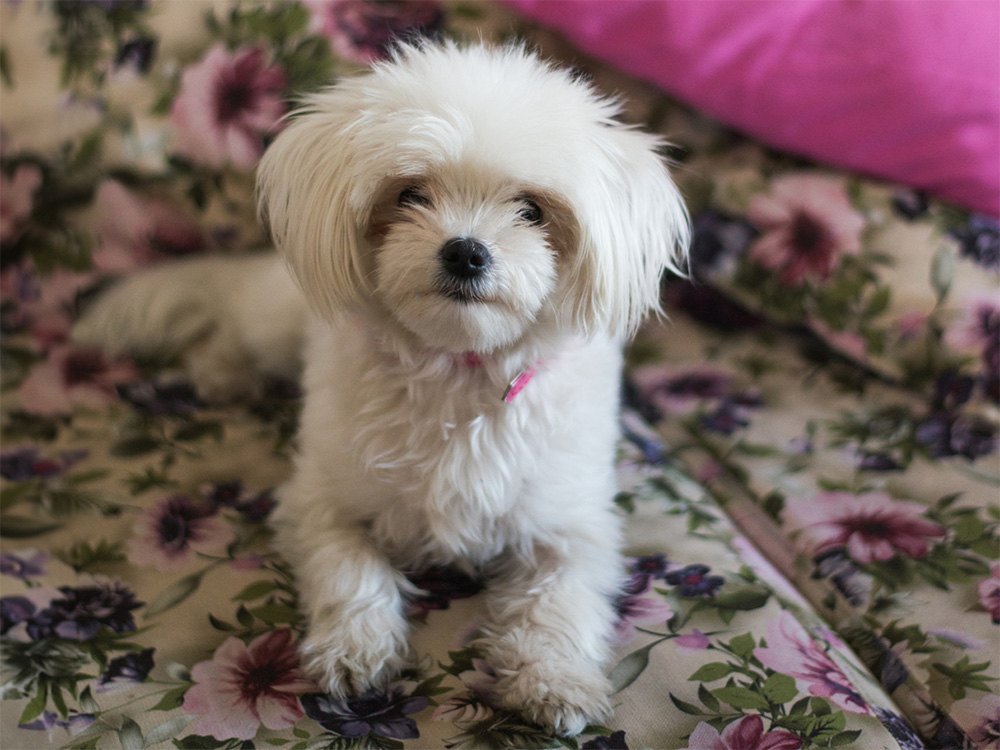Socializing your puppy before vaccinations are completed is crucial to creating a happy, confident, friendly dog.
Many people don’t let their puppy outside, or let them meet new dogs and people, until they are fully vaccinated because they fear them catching parvo or some other potentially deadly illness.
This is a problem, though, because the the crucial puppy socialization window is between the ages of 3 to 16 weeks, and vaccinations aren’t complete and effective until about 18-20 weeks old.
So, how are you supposed to safely socialize your puppy starting at 8 weeks when their immune system isn’t fully established yet?
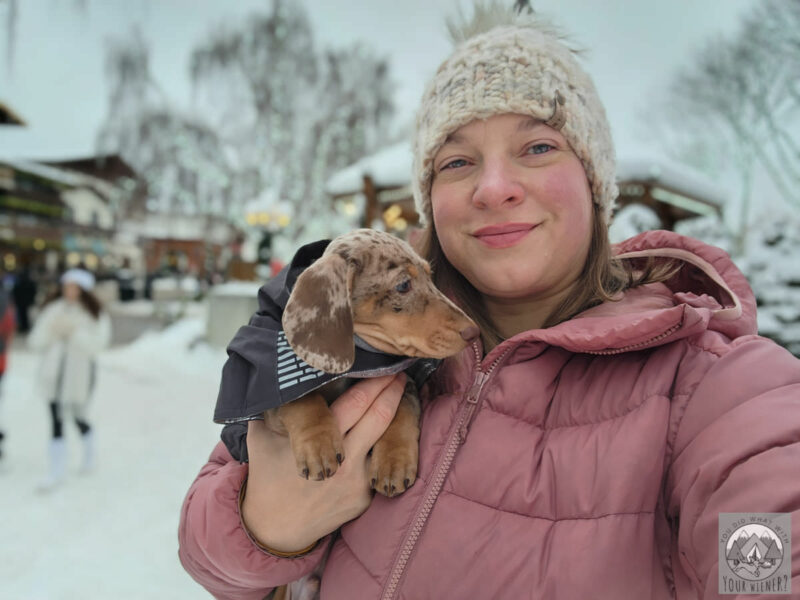
I spoke extensively about this issue with my veterinarian when I brought my first puppy home 5 years ago, and I verified this information with another veterinarian when I recently brought my second puppy.
I’m going to share what I know with you based on those conversations, my own experience, and research.
When Can I Start Socializing My Puppy?
It’s important that you start socializing your puppy as soon as they come home, which is typically at 8-10 weeks old.
Hopefully, your breeder, or the shelter, started your puppy’s socialization process earlier than that, but you’ll want to kick that into high gear since the prime puppy socialization window goes by very fast.
Unfortunately, a lot of owners make the mistake of not exposing their puppy to new experiences out of a misunderstanding about what socialization is (and isn’t) and what is safe to do (and what isn’t).
This lack of early socialization can lead to fear, reactivity, and other life-long behavioral issues in adult dogs.
According to the Academy for Dog Trainers, “Puppies that are not exposed to a wide variety of people and places, are sequestered at home… are very likely to be fearful in new contexts as they mature…. [which] can not only be debilitating for your sweet pup, but it can also lead to very serious behavior problems, including aggression.”
PetMD says, “Times have changed. Evidence is increasing that the risk of poor socialization almost always outweighs the risk of infection.”
The official position of the American Veterinary Society of Animal Behavior encourages veterinarians to recommend puppies be socialized before the vaccine series is complete.
In other words, it’s more important to worry about early socialization than to avoid the outside world out of fear.
So, how do you socialize your puppy safely before their immunity is built up?
What Experiences Should I Expose My Puppy To During the Socialization Period?
Contrary to popular belief, socializing your puppy does not only mean exposing them to as many dogs and people as you can.
In fact, that is only a small part of the socialization process.
Socialization involves exposing your puppy to sights, sounds, smells, and textures that they are likely to encounter throughout their life.
When doing this, it’s important to be gentle when introducing your dog to new stimuli while ensuring that all experiences are positive (ie. rewarding with plenty of treats and never forcing your puppy to do something).
Exposing your puppy to things at a young age will help them become familiar.
If your puppy is familiar with, and comfortable around these things, it will help remain calm and relaxed when they see them again or when faced with new stimuli.
Here are some of the things you should expose your puppy to:
- Skateboards
- Bikes
- Mobility aids like wheelchairs, walkers, and with crutches
- Different surfaces (wood, gravel, carpet, unstable surfaces, etc)
- Babies and children
- Elevators
- Public transit (bus, train, etc.)
- Elevators
- Plastic bags (blowing in the wind)
- Loud noises
- Vacuum cleaner
- Broom
- Camping equipment like tents and headlamps
- Water and rain
- Riding in the car
- New dogs and people
- Going to the veterinarian
- Grooming tools (nail clippers, a Dremel, scissors, etc)
- Worn accessories like hats and glasses
- Anything else regularly present in your life
Your puppy can be exposed to many of these things without leaving the comfort and safely of your home.
How to Socialize Your Puppy at Home
The socialization process can begin inside the home where you know your puppy is likely to be safe until their vaccinations are finished.
Some indoor puppy socialization ideas include:
- Lay different things on your carpet for your puppy to walk on like a metal baking sheet, a rug if you have wood floors, a piece of wood if your floors are all carpet, a metal grate (the bottom oven rack can work).
- Lay “strange” objects on the floor for them to explore like a rope, cardboard box, basket, garden hose, etc.
- Wear a hat, or a sweatshirt hood, around the house during your daily routine to show your puppy that those are no bit deal and not scary.
- Use things in the house to mimic loud noises that can be found outside.
- Get out a plastic bag and throw it in the air a few times or drag it around on the floor
You obviously don’t want to scare your puppy, but tapping a glass with a spoon, or gently bumping a couple of pots together, will help them be more accepting of unfamiliar sounds.
Go ahead and close that cupboard door loudly.
It sounds strange but closing a cupboard door hard will help get a dog used to “door sounds” so they are less likely to bark when one closes.
Gently knocking on the counter once in a while can help in a similar way.
Some socialization exercises can’t be done in the home though, and most should be done both inside and outside of the home to be the most effective.
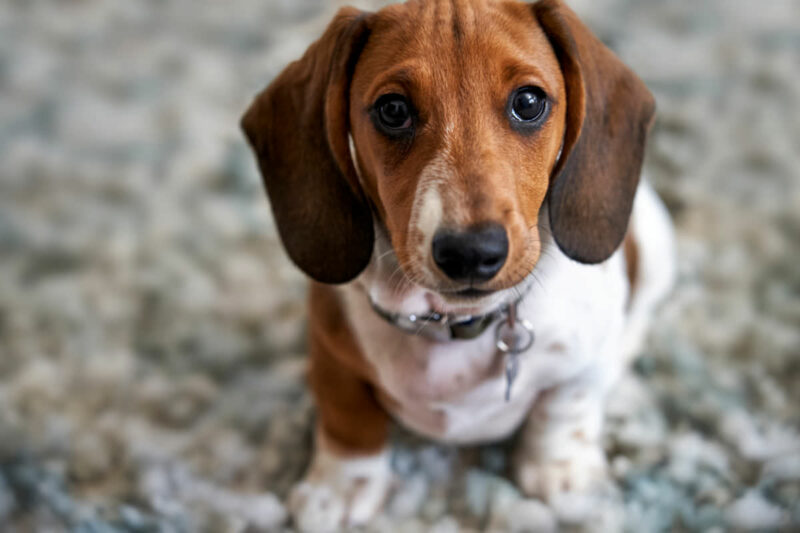


When Can I Take My Puppy Outside?
Puppies are born with a weak immune system, but that doesn’t mean you can’t start taking them out at 8 weeks old.
The vaccination waiting period applies to taking your puppy outside and letting them walk around on the ground in public places.
That means that not everywhere outside is off limits.
It all comes down to risk assessment and using your best judgement.
Parvo is almost always spread by direct contact with infected dogs, contact with feces (stool) from infected dogs, or contact with virus-contaminated surfaces.
Other illnesses are also spread from direct or indirect contact with other dogs.
That means there is little to no risk if your puppy doesn’t go where other dogs have been.
If you have a private backyard or garden, letting your puppy explore it is generally considered low risk (but always supervise so your puppy doesn’t escape or get into trouble).
In the yard or garden, your puppy can hear strange noises from the environment and experience different smells.
There are also low-risk places outside of your yard your puppy can go.
One of my favorite places to take my puppy is into the woods. I choose an area that isn’t along a trail where people often hike with their dogs.
You can also take your puppy outside without letting them touch the ground by carrying them in a sling bag, dog backpack, or pushing them in a dog stroller.
I carried my puppy on short hikes, took her to dog friendly restaurants, rode the bus with her, and walked around our neighborhood on garbage day.
The biggest challenge with doing this is what to do when your puppy has to go to the bathroom.
The easiest solution is to not stay out longer than your puppy can hold it.
You can also create a “sterile” surface for your puppy.
With my first puppy, who was potty pad trained, I carried a large potty pad with me and put it on the ground for her when she needed to go.
I recently took my puppy to a winter town festival in a stroller.
When he need to go, I found a patch of snow with no footprints or dog pee (so it was obvious no dog had been there) and stomped a patch of flat snow for him to potty on.
The second challenge is people will want to pet your puppy.
It is possible that they are sick themselves or have pet a sick dog, so if you are worried, just politely decline their request or ask them to sanitize their hands first (I actually carry a bottle with me just in case).
Can My Puppy Socialize with Vaccinated Dogs?
While not the only focus in the puppy socialization process, it is true that early exposure to dogs outside of the household is very important.
But what about the risk of your puppy getting sick from other dogs?
Again, it’s about common sense and risk assessment.
Referring back to the American Veterinary Medical Association as a source, they state:
“…puppies can start socialization classes as early as 7 to 8 weeks of age. In general, they should receive a minimum of one set of vaccines at least seven days prior to the first class as well as a first deworming.
Additionally, puppies should show no signs of illness during the classes and should be kept up-to-date on vaccines throughout the class.”
So, in short, yes, puppies can be around other vaccinated dogs.
Obviously, you wouldn’t want to let your puppy hang out with a sick dog. And your puppy should have at least one round of vaccinations.
Formal puppy socialization classes at reputable dog training facilities are generally safe if the facility requires that all dogs coming to classes are vaccinated and aren’t showing signs of illness.
Most dog training facilities also frequently sanitize surfaces.
When in doubt, ask.
But, maybe like me, you live in a rural area and don’t have access to puppy socialization classes (I did with my first puppy, but not my new boy). Then what?
Enlist your dog friends!
You can visit dogs who you know and trust or invite them to your house for a play date.
Or invite your friends to bring their dog over as long as they have no illnesses and haven’t visited a public place with a of unknown dogs (like a dog park or dog daycare) in the last few weeks
In my opinion, situations that should be avoided are strange dogs you don’t know coming up to your puppy on the street, letting your puppy on the ground in places you’re unfamiliar with, and letting your clearly sick people pet your puppy.
Is it Too Late to Socialize My Adult Dog?
What if you adopted an older dog that wasn’t socialized or fear, risk, or misinformation kept you from exposing your puppy to new experienced early?
My rescue Dachshund Gretel did not have a good start to life and wasn’t socialized at an early age. She was on Prozac to help manage her extreme anxiety.
I worked on building trust with her, exposing her to new and unfamiliar things and circumstances, and managing her anxiety.
She will always be my anxious girl, but she lives a happy life and, more importantly, we get out for frequent adventures without incident.
So, do I think it’s ever too late to socialize an adult dog? No.
You can socialize your adult dog the same way you would socialize a puppy.
However, there are some limitations. There is no replacement for proper socialization early on.
It will take more time and patience and you will need to adjust your expectations.
While Gretel has come a long, long way from the scared, nervous dog I adopted, there was a limit to that progress.
Consistency and repetition are key for socializing any dog, but adult dogs will take more of it and will only improve so far.
You may need to make the process more slowly.
If your older dog happens to suffer from severe anxiety, you may consider talking to your vet about options.
There are medications that can be incredibly helpful for nervous dogs who are desperate for some relief.
These medications can help keep them under threshold, which is when they are in the receptive to learning mindset.
Natural calming supplements can help too.
Final Thoughts
Ideally, a puppy should be socialized before 16 weeks old. Early and often as people say.
This includes exposing them to new experiences, sights, smells, people, and dogs.
While it is possible to socialize your puppy before they are fully vaccinated without leaving the house, there are also safe ways to expose puppies to the outside world before they are fully vaccinated.
In fact, it’s very important to expose a puppy to the outside world as much as possible.
Regardless of whether you’re socializing indoors or out, be sure to have a lot of high value training treats on hand to help make it a positive experience.

